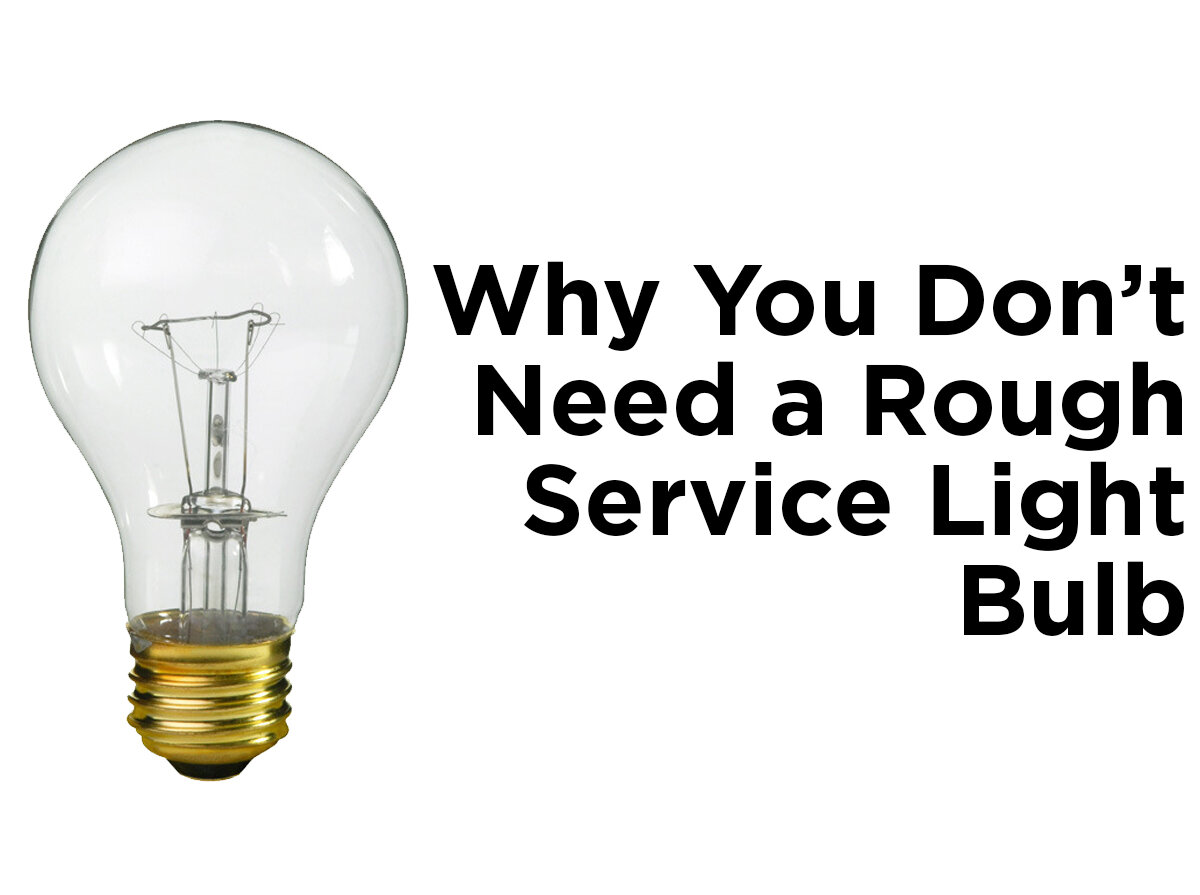Why You Don’t Need a Rough Service Light Bulb
After the Department of Energy essentially put an end to standard incandescents, many people have embraced the rough service light bulb as a way of keeping the glow they know and love. However, there are alternative light sources that have the same features without compromising the light output.
What Is A Rough Service Light Bulb?
Rough service or vibration service light bulbs are just normal incandescent bulbs made with sturdier filaments designed withstand vibration and other stresses. This includes garage door openers or even angsty teenagers that are overly fond of slamming doors, where the vibrations could cause the bulb to fail early. While they do come in a variety of wattages and finishes, 60-Watt and 75-Watt bulbs in clear or frosted finishes are the most popular choices. The heavier filament means the optimal voltage for these bulbs is 130 Volts, 10 Volts higher than the power supplied to the average American household. The combination of the higher voltage limit and the extra-strength filament means the light bulb is better equipped to handle the slightly elevated voltage in your basement. Some rough service bulbs also have a silicone coating, rendering them shatter-resistant. Plus, if the voltage supplied is 120 volts, you will use less energy and your light will last 10-20% longer.
The Alternative to Rough Service Bulbs
The downside to rough service light bulbs is powering them at less than the recommended 130 Volts results in a 10-20% decrease in the light output. Less light is fine in your water heater closet or above the access to your attic stairs but it is more worrisome in the lamp on your living room end table or over your kitchen sink. The most efficient alternative to rough service bulbs is your everyday LED.
Before you mention the initially higher costs or undesired color of light, LEDs have come a long way from its seemingly extravagant cost and space-aged look. Today, a standard A-shaped LED bulb can cost you as little as $1 and is as inconspicuous as any incandescent bulb. Your household LED also includes an integrated driver which manages the power supplied to the bulb. The driver takes the input voltage and transforms it into a lower, often 12 or 24-Volt power supply for the diodes. This means if your basement laundry room has 124 Volts running through its circuits, it doesn’t make a difference to the driver’s functionality. Rather than fry your bulb, the driver can operate with reasonably elevated voltage—the leeway is often up to 130 Volts—and still properly power your LEDs.
Any burning questions about LEDs or advice for easy ways to upgrade your lighting can be left in the comment area below. Swap suggestions with us on our Facebook, Twitter, LinkedIn, or Pinterest. Our staff at 1000Bulbs.com is willing and able to help you figure out LED replacements for your outdated incandescents, so give us a call at 1-800-624-4488 during normal business hours.









